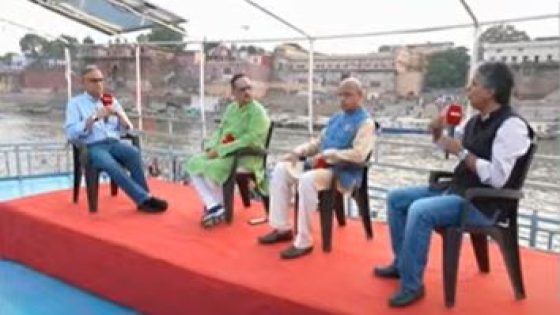The battle for Uttar Pradesh — which sends the maximum number of members to the Lok Sabha — could turn out to be an existential one for the Congress and Mayawati. For Akhilesh Yadav’s Samajwadi Party, it would be crucial since the politics in Uttar Pradesh could turn out to be a bipolar one, where the regional party plays the role of the main opposition. These were the conclusions of political experts participating this evening in NDTV’s special show Battleground, hosted by Editor-in-Chief Sanjay Pugalia.
The road to Delhi lies through Uttar Pradesh, goes the longtime electoral wisdom and the BJP has been proving it true. Since 2014, the party has made Uttar Pradesh its own, sweeping the state not only that year but in every subsequent election — Lok Sabha or assembly. This time, the construction of the Ram temple in Ayodhya also had great resonance and could work in the BJP’s favour.
The party has built a 50 per cent vote bank in the state, in which Varanasi, Prime Minister Narendra Modi’s constituency, had a big role to play.
This depended on several factors — including the city’s cosmopolitan background, magnificent cultural landscape and the position it enjoys as the country’s oldest and holiest pilgrim centre. It could even be called the nerve centre of the east, the experts said..
“In 2014, when the BJP was planning a strategy, they needed a great performance and they had to perform in UP to reach the majority mark,” said Sandeep Shastri, the National Coordinator of Lokniti Network.
In that circumstance, it was felt that if the Prime Ministerial candidate fights from UP as well as his seat in Gujarat, it could provide the big push the party needs in the state.
“Fighting from Varanasi also had an impact on the areas nearby. Varanasi’s cultural significance has been a factor. Since 2014, there has been a lot of development that has happened,” he added.
Barring a short while, the city always had an affinity to the BJP. And now, the Modi factor has led to a huge shift in the voting figures — going up from 37 per cent in 2009 to 56 per cent in 2019 and 64 per cent in 2019.
What has also made a further difference in Uttar Pradesh is the shift in the Muslim vote. “The BJP, which used to get single digit vote per cent, now gets double-digit Muslim vote per cent. Unfortunately, if Muslims vote for the BJP, they are called sarkaari Muslims,” said Yashwant Deshmukh, the Founder-Director of CVoter.
Once it has devised a winning formula, the BJP has been reluctant to discard it. The party has repeated most of its sitting MPs in Uttar Pradesh.
On the other side, Mayawati’s Bahujan Samaj Party, meanwhile, has been trying to stay afloat by fielding minority candidates.
Reading the game plan, Akhilesh Yadav’s Samajwadi party has kept the Yadav tickets only within the family and fielded mostly candidates from Other Backward Classes. 26 per cent of its tickets have gone to non-Yadav OBCs.
But leaving Mayawati out of the Grand Alliance of Uttar Pradesh could have been a tactical error, said Mr Deshmukh. “You ignored a 12.5 (vote) percentage partner and brought Congress, a 2.5 per cent partner. I don’t understand the math,” he added.
It is a factor that buoys the BJP’s morale. In 2019, the BJP won 71 of the state’s 80 seats. The number, though, shrunk to 62 in 2019, owing to the alliance between Akhilesh Yadav’s Samajwadi Party and Mayawati’s Bahujan Samaj Party.
Now, the Samajwadi Party is contesting 63 of the 80 seats in Uttar Pradesh. The rest — including the Gandhi bastions of Amethi and Raebareli — has fallen to the share of the Congress.
Source Agencies



